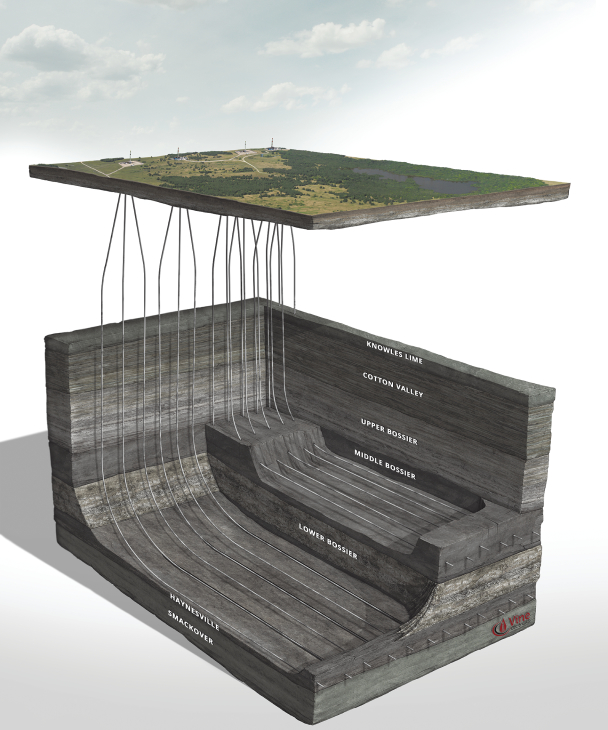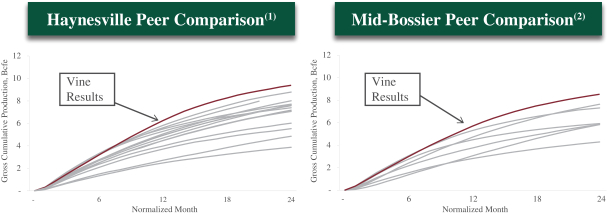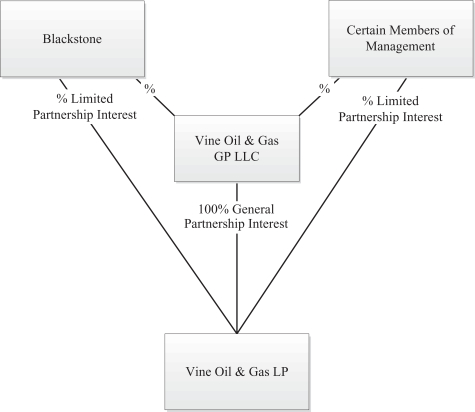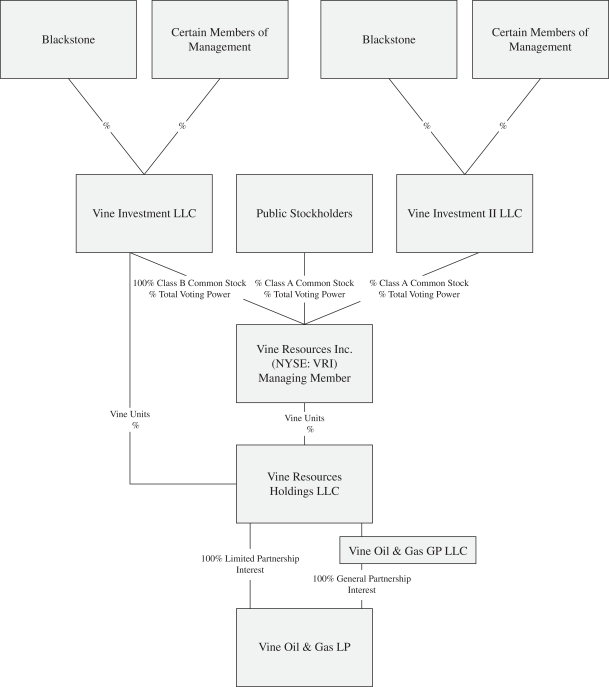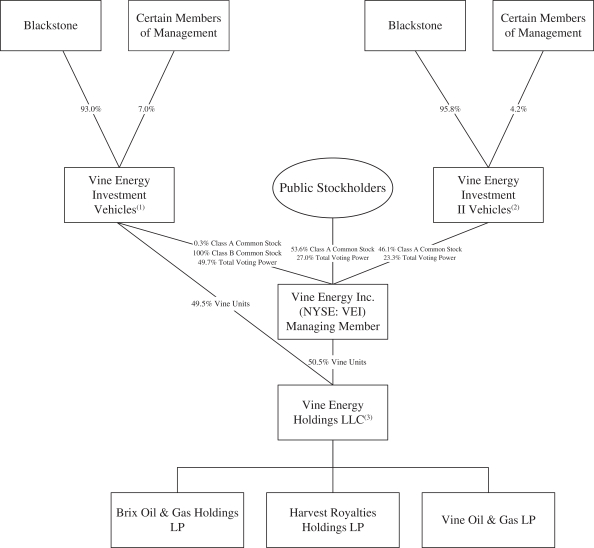If new or more stringent federal, state, or local legal restrictions relating to the hydraulic fracturing process and disposal activities are adopted in areas where we operate, we could incur potentially significant added costs or permitting requirements to comply with such requirements, experience delays or curtailment in the pursuit of exploration, development, or production activities, and perhaps even be precluded from drilling wells.
In addition, EPA has asserted federal regulatory authority pursuant “Business—Regulation of Environmental and Occupational Safety and Health Matters—Hydraulic Fracturing” contains further description of the laws and regulations relating to the Safe Drinking Water Act over certain hydraulic fracturing activities involving the use of diesel fuels and published permitting guidance in February 2014 addressing the performance of such activities using diesel fuels in those states where EPA is the permitting authority. In May 2014, the EPA issued an Advance Notice of Proposed Rulemaking to collect data on chemicals used in hydraulic fracturing operations under Section 8 of the Toxic Substances Control Act. Further, the EPA finalized regulations under the federal Clean Water Act (“CWA”) in June 2016 prohibiting wastewater discharges from hydraulic fracturing and certain other natural gas operations to publicly-owned wastewater treatment plants. Also, in December 2016, the EPA released its final report on the potential impacts of hydraulic fracturing on drinking water resources, concluding that “water cycle” activities associated with hydraulic fracturing may impact drinking water resources under certain circumstances. In addition, the federal Bureau of Land Management (“BLM”) finalized rules in March 2015 that impose new or more stringent standards for performing hydraulic fracturing on federal and American Indian lands; however, the U.S. District Court of Wyoming struck down this rule in June 2016. An appeal of this decision is pending. On March 15, 2017, the BLM filed a motion in the appeal, requesting the court to hold the case in abeyance pending rescission of the rule.affect us.
Federal and state legislative and regulatory initiatives relating to pipeline safety that require the use of new or more stringent safety controls or result in more stringent enforcement of applicable legal requirements could subject us to increased capital costs, operational delays and costs of operation.or reduced prices.
Pursuant to thefederal legislative authority under the Natural Gas Pipeline Safety Act (“NGPSA”) and the Hazardous Liquid Pipeline Safety Act (“HLPSA”), as amended by the Pipeline Safety Improvement Act of 2002, the Pipeline Inspection, Protection, Enforcement and Safety Act of 2006, the Pipeline Safety, Regulatory Certainty, and Job Creation Act of 2011 (“2011 Pipeline Safety Act”) and the Protecting Our Infrastructure of Pipelines and Enhancing Safety Act of 2016 (“2016 Pipeline Safety Act”),governing pipeline safety matters, the Pipeline and Hazardous Materials Safety Administration (“PHMSA”) has promulgated regulations requiring pipeline operators to develop and implement integrity management programs for certain gas and hazardous liquid pipelines that in the event of a pipeline leak or rupture could affect “high consequence areas,” which are areas where a release could have the most significant adverse consequences, including high-population areas, certain drinking water sources and unusually sensitive ecological areas. These regulations requiremay impact operators of covered pipelines to:
perform ongoing assessments of pipeline integrity;
identify and characterize applicable threats to pipeline segments that could impact a high consequence area;
improve data collection, integration and analysis;
repair and remediatedownstream from the pipeline as necessary; and
sales points for our product.
implement preventive and mitigating actions.
In addition, states have adopted regulations similar to existing PHMSA regulations for certain intrastate gas and hazardous liquid pipelines. At this time, we cannot predict the ultimate cost of compliance with applicable pipeline integrity management regulations, as the cost will vary significantly depending on the number and extent of any repairs found topipelines which may be necessary as a result of pipeline integrity testing, but the results of these tests could cause us to incur significant and unanticipated capital and operating expenditures for repairs or upgrades deemed necessary to ensure the safe and reliable operation of our pipelines.
The 2016 Pipeline Safety Act is the most recent federal legislation to amend the NGPSA and HLPSA pipeline safety laws, requiring increased safety measures for gas and hazardous liquids pipelines. The 2016 Pipeline Safety Act extends PHMSA’s statutory mandate through 2019 and, among other things, requires PHMSA to complete certain of its outstanding mandates under the 2011 Pipeline Safety Act and to develop new safety standards for natural gas storage facilities by June 2018. The 2016 Pipeline Safety Act also empowers PHMSA to address imminent hazards by imposing emergency restrictions, prohibitions and safety measures on owners and operators of gas or hazardous liquid pipeline facilities without prior notice or an opportunity for a hearing. Changes to pipeline safety laws by Congress and regulations by PHMSA or states that result in more stringent or costly safety standards could have a significant adverse effect on us and similarly situated midstream operators.
For example, in March of 2015, PHMSA finalized new rules applicable to gas and hazardous liquid pipelines that, among other changes, impose new post-construction inspections, welding, gas component pressure testing requirements, as well as requirements for calculating pressure reductions for immediate repairs on liquid pipelines. Also, in March 2016 PHMSA published a proposed rulemaking that would expand integrity management requirements and impose new pressure testing requirements on currently regulated pipelines. The proposal would also significantly expandthan the regulation of gathering lines, subjecting previously unregulated pipelines to requirements regarding damage prevention, corrosion control, public education programs, maximum allowable operating pressure limits, and otherfederal requirements. The safety enhancement requirements and other provisions of the 2016 Pipeline Safety Act as well as any implementation of PHMSA, rules thereunder could require us to install new or modified safety controls, pursue additional capital projects, or conduct maintenance
programs on an accelerated basis, any or all of which tasks could result in our incurring increased operating costs that could have a material adverse effect on our results of operations or financial position.
Moreover, effective October 2013, PHMSA adopted new rules increasing the maximum administrative civil penalties for violation of the pipeline safety laws and regulations that occur after January 3, 2012 to $200,000 per violation per day and up to $2 million for a related series of violations. FederalThese federal and state legislative and regulatory initiatives relating to pipeline safety that require the use of new or more stringent safety controls or result in more stringent enforcement of applicable legal requirements could subject us to increased capital costs, operational delays and transportation costs of operation.due to constraints on available pipeline capacity, or reduce the price purchasers are willing to pay for our product.
We are subject to risks associated with climate change.
Climate change continues to attract considerable public and scientific attention. As a result, numerous proposals have been made and are likely to continue to be made at the international, national, regional and state levels of government to monitor and limit emissions of greenhouse gases (“GHGs”). These efforts have included consideration of cap-and-trade programs, carbon taxes, GHG reporting and tracking programs, and regulations that directly limit GHG emissions from certain sources. At the federal level, no comprehensive climate change legislation has been implemented to date. The EPA has, however, adopted regulations under existing provisions of the federal Clean Air Actrules that among other things, establish Prevention of Significant Deterioration, or PSD, construction and Title V operating permitpermitting reviews for certain large stationary sources. Facilities required to obtain PSD permits for their GHG emissions also will be required to meetfrom potential major sources of certain principal pollutant emissions, which reviews could require meeting “best available control technology” standards that will be established on acase-by-case basis. EPA rulemakings related to GHGfor air emissions, could adversely affect our operationsas well as monitoring and restrict or delay our ability to obtain air permits for new or modified sources. In addition, the EPA has adopted rules requiring the monitoring andannual reporting of GHG emissions from specified onshorecertain petroleum and offshore oilnatural gas system sources and, gas production sourcestogether with the National Highways Transportation Safety Administration, implement GHG emissions limits on vehicles manufactured for operation in the United States on an annual basis, which include certain of our operations. Recently, in December 2015, the EPA finalized rules that added new sources to the scope of the greenhouse gases monitoring and reporting rule. These new sources include gathering and boosting facilities as well as completions and workovers from hydraulically fractured oil wells.States. The revisions also include the addition of well identification reporting requirements for certain facilities. Furthermore, in May 2016, the EPA finalized rules that establish new controls for emissionsregulation of methane from new, modified or reconstructed sources in the oil and natural gas source category, including production, processing, transmission and storage activities. The rule includes first-time standards to address emissions of methane from equipment and processes across the source category, including hydraulically fractured oil and natural gas well completions. The BLM has also proposed rules to reduce methane emissions from venting, flaring, and leaking on public lands. As a result of this continued regulatory focus, future federal GHG regulations of the oil and gas industry remain a possibility.
In addition,sector has been subject to uncertainty in recent years. Prior standards were rescinded during the U.S. CongressTrump Administration; however, the current administration has from time to time considered adopting legislation to reducecalled for the reinstatement or issuance of methane emissions of GHGsstandards for new, modified, and a number of states have already taken legal measures to reduce emissions of GHGs primarily through the planned development of GHG emission inventories and/or regional GHG capexisting oil and trade programs. Internationally, in December 2015,gas facilities. On an international level, the United States was one of many175 countries atto sign the 21st Conference of the Parties of the United Nations Framework Convention on Climate Change in Paris France that prepared an agreement requiringAgreement, which requires member countries to review and “represent a progression” inset their nationally determined contributions which setown GHG emissionsemission reduction goals every five years. However, the GHG emission reductions called for by this Paris agreement are not binding and future participationbeginning in the agreement by2020. Although the United States athad withdrawn from the Paris Agreement, the current administration has recommitted the United States to the agreement and directed the federal government to begin formulating the United States’ nationally determined emissions reduction goal under the agreement. The impacts of this time remains uncertain. The adoption oforder, and any legislation or regulatory programsregulation promulgated to reducefulfill the United States’ commitments under the Paris Agreement, are uncertain.
Forced emissions of GHGsreductions could require us to incur increasedincrease our operating costs such as costs to purchase and operate emissions control systems, to acquire emissions allowances or comply with new regulatory or reporting requirements. Any such legislation or regulatoryCapEx. Such programs could also increaseadversely affect the demand for natural gas by increasing the cost of consuming natural gas. Additionally, on January 27, 2021, the current administration called for substantial action on climate change, including, among other things, the increased use of zero-emissions vehicles by the federal government, the elimination of subsidies provided to the fossil fuel industry, and thereby reduceincreased emphasis on climate-related risks across agencies and economic sectors. Incentives to conserve energy or use alternative energy sources as a means of addressing climate change could also adversely affect the demand for thenatural gas. Additionally, various state and local governments have brought suit against various oil and natural gas we produce.companies alleging damages related to climate


